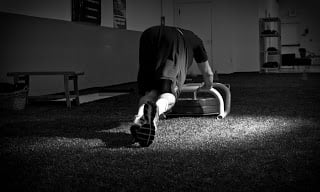
When you hear the word strength endurance, you might see an image of someone jogging while lifting weights. This picture makes sense because strength is the ability to exert force and endurance is the ability to maintain an activity. The term together, strength endurance, is usually defined as the ability to maintain muscular tension (force) without a decrease in efficiency. So strength endurance is really the ultimate combination that everyone seeks to achieve, especially athletes.
One of the easiest ways to improve strength endurance is to just work on strength, even ignoring the endurance component. Think about how you can run a faster mile by including sprinting in your workouts, but you’ll never run a faster 100 meter by keeping the mile run in your training regimen. It is because strength endurance comes down to intensity, the percentage of maximal effort you need to put in to accomplish a task repeatedly. An oversimplified example is if you can squat 400 pounds, but weigh 200 pounds, then jumping only requires you to move at 50% of maximal effort. Another person weighing 200 pounds, but can only squat 300 pounds, must produce greater relative efforts, closer to 75%.
A 2009 study out of the European University of Madrid actually looked at this concept of strength endurance, particularly in relation to intensity. A common test for firefighters was used in the study; a maximum repetition test in bench press at 40 kilograms (88 pounds). The authors concluded that all of their initial training should be designed to increase maximal strength to bench press at least 100 kilograms (220 pounds). This maximum allowed the strength endurance test to occur at a relatively lower, and ideal, intensity of 40%. Those subjects with a bench press of 80 kilograms performed the 40 kilogram test at 50% intensity, which resulted in lesser repetitions and a lower performance.
Once a suitable maximum performance is achieved, this level must still be maintained along with an emphasis on the test itself. We use the force plate to analyze maximum strength by assessing LOAD (see Sparta Point 2/2/11), and then we seek to improve the sport skills and reactive strength for better efficiency (see Sparta Point 11/24/10). After all, everything is a skill, whether you are hitting a baseball or running an agility drill. Therefore, the execution of a movement just might be inefficient, like an athlete who has not played their sport for a couple of weeks (see Sparta Point 7/21/10).
So before you start performing countless repetitions because you need “more cardio,” really evaluate your strength endurance. Most likely you’ll find that you’ll need to just improve your maximum strength to make everything else occur at a lower relative intensity.